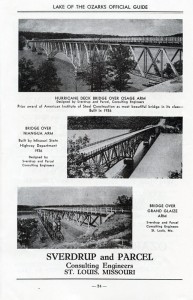November, 1858: For more than a year,
John Joseph Hogan with surveyors and friends had scouted Missouri's southeastern Ozarks for
arable land, filed claims for plots through the land agents of Cape Girardeau
and found immigrant Irish who would settle the land and work a farm. Near the
end of November 1858 – 155 years ago – Hogan again set out for his southern
colony. This fourth trip would be his longest (11
months) sojourn in the Ozarks and the most active months of development of the
settlement he envisioned.
Interestingly – and a fact not noted in most official and
unofficial histories of his settlement – Hogan did not prefer the deeper Ozarks.
In 1857, on his first reconnaissance trip, he
had claimed land in the area around Ellsinore and along the Little Black River
(“480 acres in a body on Ten Mile Creek”) finding it more suitable for
agriculture and with “improved land enough” that they would not be starting
from scratch.
However when he returned
in the late fall of 1858, he found his plans had been dramatically changed.
Arrived at the settlement, I found
a difficulty existing. In the district of country where I had bought land the
year previous, intending to make the place the center of the proposed
settlement, I found that all the government land, fit for cultivation, had in
the meantime been bought by parties not Catholics, so that there was no longer
a possibility of owning sufficient ground there to form a colony such as I had
contemplated. There was improved land enough in the neighborhood that could be
bought at a reasonable price and on easy conditions. But the cry was for
government land and at government price.
Westward then, though very much
against my will, I had to move about forty miles, to a region of country where
there was yet much vacant government land, on the confines of Ripley and Oregon
counties, along the tributaries of the Current and Eleven Point rivers, about twenty
miles north of the state of Arkansas.
 |
| Colton's Missouri Map of 1875 clearly locates the central point of Father Hogan's colony on the Oregon/Ripley county line about 20 miles north of Arkansas and a few miles east of the Eleven Point River. Locations lingered on printed maps sometimes well after their demise. |
|
|
From that point on, Hogan and arriving Irish immigrants were
busy shaping this growing community.
In
Hogan’s classic memoir,
On the Mission in Missouri, he compresses the building
activities of many months into a short paragraph:
Improvements went on apace; cutting down trees, splitting,
rails, burning brushwood, making fences, grubbing roots and stumps, building
houses, digging wells, opening roads, breaking and ploughing land, and sowing
crops. Already in the spring of 1859, there were about forty families on the
newly acquired government lands, or on improved farms purchased, east and west
of Current River, in the counties of Ripley and Oregon; and many more were
coming …
He mentions the log chapel built on "ground bought and
donated by Reverend James Fox of Old Mines, Missouri: a one story log house
forty feet square … partitioned into two apartments, one for the chapel and the
other for the priest’s residence."
Perhaps the chapel was built while paperwork on the tract of land was in
the works. In searching land records, we found that Reverend Fox was issued a
land patent on September 1, 1859 (near the end of Hogan’s sojourn in the
Ozarks) for 320 acres on Oregon County, which he donated to the flourishing
colony.
 |
| In the archives of the St. Louis Archdiocese is a small account book that Father Hogan kept during his time in the Ozarks. In it we found his enumeration of the cost of his log church in the pines: $85.31 (page 48, Mystery of the Irish Wilderness) |
Hogan traveled back to Chillicothe at the end of October, 1859,
ending his full time presence and oversight of the colony. One more brief trip –
November 17 to mid-December 1859 – to southeast Missouri was his last. Soon the
Civil War made travel perilous. Demands of his expanding missionary parish in
northwest Missouri increased. Hogan remained in the north, but still recalled
with affection and concern the settlers he had led to area.
Postscript: Long after the settlement had been scattered by
the vagaries of war, another land record tells a sad story of the Irish settlement.
On May 17, 1879, the property Father Fox had
donated to the colony for the log church
was sold for
back taxes.
 Leif Sverdrup, a Norwegian immigrant, with his college engineering teacher, John Parcel, founded the company in 1928. During World War II, General Sverdrup became chief engineer for General Douglas MacArthur.
Leif Sverdrup, a Norwegian immigrant, with his college engineering teacher, John Parcel, founded the company in 1928. During World War II, General Sverdrup became chief engineer for General Douglas MacArthur.


